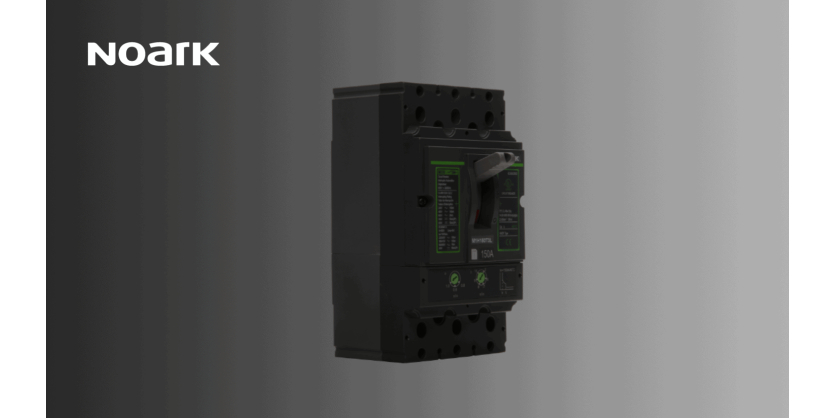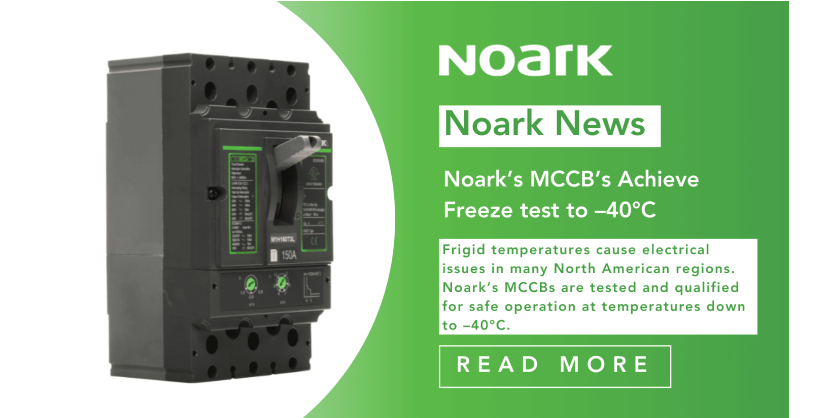Noark Electric: Understanding 80% Vs. 100% Rated
December 15, 2023

Noark Electric clears up the misunderstanding of 80% Vs. 100-% rated circuit breakers. When it comes to electrical installations and maintenance, safety is of utmost importance. Even among professionals in the field, there is often a misunderstanding between 80% and 100% rated circuit breakers and their applications in panel design.
Electrical original equipment manufacturers (OEMs), panel builders, contractors, and systems integrators are all involved in making decisions about which circuit breaker should be installed to carry the load requirements of various given systems in many industries. This blog will clear up misconceptions between 80% and 100% circuit breakers and their applications in panel design.
First, Noark looks at these terms and how they apply to electrical panel design. Please note, these terms apply to circuit breakers in the USA and Canada; consult the most recent applicable codes and standards in your region to comply with local laws.
Terms and How They Apply to Electrical Panel Design
In Canada and the United States, the National Electric Code (NEC) defines the difference between these terms and how the breaker ratings of a particular manufacturer will determine which circuit breaker can be used to fit the load of an electrical panel.
Section 210.20(A) of the NEC indicates that a circuit breaker for a branch circuit must be rated so that it can handle the non-continuous load plus 125% of the continuous load. A continuous load is one where the maximum current will continue for three hours or more. Therefore, when designing an electrical panel, the chosen breaker must be capable of having an additional 25% capacity of the continuous load above its manufacturer’s rating to accommodate this headroom.
Typically, this means selecting a larger and more expensive breaker. However, this is not always the case. With a 100% rated circuit breaker, the headroom required to accommodate the additional 25% capacity of the load is eliminated. In its place, the circuit breaker must be able to handle the sum of the continuous and the non-continuous load.
Understanding Circuit Breaker Tests and Ratings
Circuit breakers are typically installed in an enclosure where heat dissipation is poor compared to an open environment. Therefore, a heat rise test is done to determine the maximum current that the breaker can carry without a temperature rise in any part beyond the permissible limit. This means that a circuit breaker is rated for conventional free-air thermal current and conventional enclosed thermal current. The difference between free-air and enclosed thermal current capabilities affects the rated operational current of the circuit breaker.
Manufactures differentiate between the current carrying capacities of circuit breakers of the same rating by putting either the 80% or 100% labels on their breakers. An 80% rated breaker means that the breaker is listed for operation at 80% of its rating and can be used in an 80% branch circuit design. The 80% design as per section 210.20(A) of the NEC provides overcurrent protection by considering the sum of the non-continuous loads and 125% of the continuous loads.
When a circuit breaker is listed for operation at 100% of its rating, the overcurrent protection device shall not be less than the sum of the continuous load and the non-continuous load.
Looking at Noark Product Ratings
Noark Electric’s M6 Series Molded Case Circuit Breaker has options for both 80% and 100% ratings. They are rated at 800A, 1000A, or 1200A, and are available in either 3-pole or 4-pole configurations. They have interrupting capacities of either 42kA or 65kA at 480Vac, and have Bus Bar or Lug Line/Load Side Connection termination points.
At Noark, we manufacture low-voltage electrical components in plants that are certified according to ISO standards that satisfy the very highest demand in the field of quality assurance and production quality. In addition to ISO Certification, we also meet the stricter CIG 023 Certification for the purposes of covering the requirements of above-standard tests for local certification marks, which are always awarded by national certification authorities.
Rely on Noark’s high-quality products and exceptional value, backed with world-class service and support. Every Noark product is tested and certified to the highest industry standards and is covered by our exclusive five-year limited warranty.
Connect with the Noark Team to Learn More
If your business is interested in learning more about Noark Electric’s MCCBs or other circuit protection products, contact their team today.
Also, make sure you sign up for the Noark Newsletter to receive exclusive product updates, Noark news, free resources, and more.
Related Story
Noark’s MCCB’s Achieve Freeze Test to –40°C

Noark Electric manufactures top-quality low-voltage electrical components including molded case circuit breakers (MCCBs) for many applications. In heavy commercial applications and industrial facilities, MCCBs are relied upon to protect against electrical damage caused by short circuits or overload conditions. Since they have a high interrupting capacity, they can handle larger loads than these processes require. Because of their importance in buildings and infrastructure, it is critical that they undergo and pass stringent testing to ensure they function properly when needed the most. In this blog, Noakr looks at why Noark’s MCCBs are tested to –40°C ambient condition.



